80 F. high in the Twin Cities Sunday.
81 F. average high on August 11.
79 F. high on August 11, 2012.
Comfortable and dry into Thursday; dew points in the 50s.
90-degree heat returns next week.

"...
Since 2011, the United States has experienced 25 extreme weather events that each caused
more than $1 billion in damages. These events contributed to the loss
of more than 1,000 lives and each American family paying $400 more per
year..." - from a Huffington Post Op-Ed from former governor, ambassador and U.S. Energy Secretary Bill Richardson; details below.
Searching for Serenity
"God grant me the serenity to accept the things I
cannot change; courage to change the things I can; and wisdom to know
the difference."
In recent days I've been sharing some of the
fine whines and veiled threats from a handful of people, chagrined that
this summer "isn't hot enough!"
But Howard Sharpe writes: "Not sure why everyone
is so incensed over low humidity, puffy clouds, etc. I'm an older guy,
and this is what summer was to me while growing up. Could it be that in
our increasingly egocentric culture, folks expect even the weather to
pander to their whims? Just a thought."
No idea on this one. Dr. Phil hasn't returned my
(repeated and urgent) calls. My hunch? Summers are precious,
sacrosanct. Any weather that interferes with our preconceived daydreams
of summer will cause some level of agitation & hand-wringing.
For the record, cooling degree records since
June 1 show we've spent 3.5 percent MORE $ cooling our homes than
average. Must have been that July heat spike.
Hot weather lovers will be in a better mood
soon. A streak of 80s starts next weekend, lingers 2-3 weeks. Expect a
few 90s for the State Fair.
This week? Comfortable 70s, with a risk of a meteor shower.
Perseid Meteor Shower Promises To Be A Dandy. You'll
want to check out this free show tonight, and again Tuesday night.
Skies will be clear with low humidity and excellent visibility, a sky
more like late September, increasing the odds of seeing the Perseids.
Here's an excerpt of a very timely post at
gizmag.com: "...
A
meteor shower occurs when the Earth passes through a stream of debris,
usually, but not always, resulting from the passage of a periodic
comet. The Perseid meteors are associated with the comet Swift-Tuttle,
which has an orbital period of 133 years, and which made its last
passage through the inner Solar System in 1992.The rate at which bright
Perseids are seen is larger when the Earth passes through this new
filament of debris, leading to a double peak in the Perseid rate. This
year, the first peak is expected at 1:00 p.m. UTC on August 12, and the
second peak at 2:00 a.m. UTC on August 13. The first peak is well
placed for western North America and the Eastern Pacific, while the
second favors Europe and Africa..."
Urban Heat Island. Last night, trolling the
WeatherSpark
web site (which is very good with useful information and great
visualizations) I plotted current temperatures (10 pm Sunday evening)
and noticed a 10 F spread between suburban temperatures and the downtown
core, where asphalt and concrete retains and reradiates the daytime
heat of the sun. 75 at MSP International, at the same time it was 62 in
New Richmond and 64 at Hutchinson.
One Persistent Front. On Sunday I wrote about the
atmospheric holding pattern we're in, how (once again) the jet stream
has been locked in a pattern that favors cool weather over the northern
tier of the USA (east of the Rockies). The weather has been "stuck" for
nearly 3 weeks, and the boundary separating the parade of Canadian cool
fronts from hot, sweaty (seasonable) air over the Deep South has sparked
historic flooding from Colorado to Kansas, Missouri, Arkansas and
Tennessee. That front gets a slight southward nudge this week, the
heaviest rains forecast from Little Rock to Huntsville, Atlanta and the
Carolinas, where some 5-7" rains may fall. Map: NOAA HPC.
Enjoy The Low Dew Points - Dog Days Return Next Week.
Data from the Norwegian Meteorological Institute (above) confirms a
definite warming trend, starting next weekend, with a few highs at or
just above 90F next week. Did you really think we'd sail through the
rest of summer like this? Consider the last couple of weeks a mid-summer
gift. Data above courtesy of
WeatherSpark.
Hot Enough. No, we're not talking "2012 Hot", but
next week may get your attention as a massive, overheated bubble of hot
high pressure expands east across the Plains into the Midwest and
Mississippi Valley. All that 90-degree-plus heat that's been baking the
Southwest will turn up the temperatures from Minneapolis/St. Paul to
Chicago, St. Louis and Kansas City, a pattern which will probably linger
into early September. ECMWF forecast map above valid midday next
Tuesday, August 20, courtesy of WSI.
10 Myths About Summer. Here's an excerpt of a very interesting article at The Washington Post's
Capital Weather Gang: "
#10: “Soda quenches your thirst”
"After a hot day in the sun, you may feel as though nothing would
refresh you more than a glass of Coke. And perhaps you would feel as
though you were sufficiently rehydrated. But that sugary drink might
actually cost your body more fluids. Unlike the folklore, which states
that caffeine is the reason that soda is dehydrating, the refined
sugars in artificially sweetened drinks actually cause your body to
pull more fluid and work extraordinarily hard to metabolize them.
Although this has been a controversial topic of study over the years,
water is always the healthiest way to rehydrate after a long day in the
sun. Some sports drinks are too high in sugar to end up being
rehydrating, although isotonic (containing similar concentrations of
salt and sugar as the human body) sports drinks may reduce exhaustion
during an intense workout..."
To Save Water, Parched Southwest Cities Ask Homeowners To Lose Their Lawns. Better than asking, they're PAYING them to dig up their lawns and plant things that require less water.
The New York Times has more - here's an excerpt: "...
Grass
front yards are banned at new developments in Las Vegas, where even
the grass medians on the Strip have been replaced with synthetic turf.
In Austin, Tex., lawns are allowed; watering them, however, is not — at
least not before sunset. Police units cruise through middle-class
neighborhoods hunting for sprinklers running in daylight and issuing
$475 fines to their owners. Worried about dwindling water supplies,
communities across the drought-stricken Southwest have begun waging war
on a symbol of suburban living: the lush, green grass of front lawns.
In hopes of enticing, or forcing, residents to abandon the scent of
freshly cut grass, cities in this parched region have offered homeowners
ever-increasing amounts to replace their lawns with drought-resistant
plants; those who keep their grass face tough watering restrictions and
fines for leaky sprinklers..."
Photo credit above: Monica Almeida/The New York Times. "
Jessica
Seglar and her fiancé, Dominic Nguyen, of Long Beach, Calif., decided
to replace their lawn with Ceanothus, a lilac native to California, and
other drought-tolerant plants. "
10 Years After Record Black-Out, U.S. Electrical Grid Faces New And Emerging Threats. All I want for Christmas is a back-up emergency generator. Here's an excerpt from the AP and
The Star Tribune: "...
At
the same time, aging coal and nuclear plants are shutting down in the
face of higher maintenance costs, pollution restrictions and
competition from cheap natural gas. Renewable generation such as wind
turbines and solar panels is being installed, adding power that's
difficult to plan for and manage. Temperatures and storms are getting
more extreme, according to federal data, and that increases stress on
the grid by creating spikes in demand or knocking out lines or power
plants. Some regulators and policymakers are increasingly worried about
cyberattacks that could target systems that manage power plants or
grids. "The grid that exists today wasn't designed for what everybody
wants to do with it," says Joe Welch, CEO of ITC Holdings Corp., the
largest independent transmission company in the U.S..."
Photo credit above: "
In a Friday, Aug. 15, 2003 file
photo, the Empire State Building towers over the skyline of a
blackout-darkened New York City just before dawn. Power lines from
Jersey City, N.J., are in foreground. Ten years after a blackout
cascading from Ohio affected 50 million people, utilities and analysts
say changes made in the aftermath make a similar outage unlikely today,
though shifts in where and how power is generated raise new
reliability concerns for the U.S. electric grid system." Photo: George Widman, Associated Press.
Edward Snowden Predicts Catastrophic And "Inevitable Solar Tsunami".
During the course of the day I collect, curate and aggregate stories
that I find interesting, curious or funny. I initially hesitated
including this one (considering the sources, Snowden and Voice of
Russia). But that little (borderline insane) voice in the back of my
muddled mind won out, and here is a curious story, one I hope and pray
is "alarmist hype".
To the best of my understanding the state of
science doesn't support a predict of WHEN an X-class solar flare will
erupt on the sun, and whether Earth will be in the direct path of a
subsequent CME, or coronal mass ejection, one capable of bringing down
the grid. I don't think this is actionable intelligence, but under the heading of full disclosure, here is an excerpt from
The Voice of Russia. What, you don't troll this site? "
The
documents collected by Snowden offer proof that the Central
Intelligence Agency (CIA) learned about the existing threat 14 years
ago. Ever since the world’s governments have been working secretly
since, to be well prepared for what could be termed as “Solar
Apocalypse”. Speaking from his room at the Sheremetyevo Airport’s
hotel, Snowden said that the government has been working hard to be
well prepared for September’s catastrophic solar flares, which can be
fraught with fatal consequences, as scientists said – they can lead to
the death of mankind. The Central Intelligence Agency learned about the
existing threat as long ago as 1999, but according to the government’s
decision, this information was immediately made secret.
.." (File image above: NASA).
A Breathing Earth. Look at this image long enough and you'll begin to hallucinate. I found this post from UX Blog to be particularly visual, and interesting. Here's a clip: "...Of
course there are the global characteristics of climate and the nature
of land to heat and cool more rapidly than water. The effects of warm
currents feeding a surprisingly mild climate in the British Isles. The
snowy head start of winter in high elevations like the Himalayas,
Rockies, and Caucuses, that spread downward to join the later snowiness
of lower elevations. The continental wave of growing grasses in
African plains. But, overall, to me it looks like breathing. And my
pixel is right at an interesting intersection of life and ice, where
the longest night of the year feels like forever, and the longest day
of the year is a like a battery strapped to my back. My winter was
especially dark. And my summer has been full of blessings -but
I don't think either extreme would have been as memorable without the
helpful (or painful) contrast of its opposite -all made possible by a
23.5° tilt."
What Happens When Four Guys Try To Cross The Atlantic...In A Rowboat.
Please don't try this at home. If you're going to do it use a canoe,
better yet a kayak. Here's a clip from an amazing story at SportsNet: "Adam
Kreek has just finished a four-hour overnight shift rowing through
thrashing wind and waves. The two-hour nap he’s owed is even more
welcome than usual as darkness fades into morning. Kreek, 32, and three
crewmates had set off Jan. 23 from Senegal on a cramped nine-metre
boat that resembles a wingless, waterproof space shuttle. They’re bound
for Miami, 6,770 km across the Atlantic Ocean, and a world record—it
would be the first successful row from mainland Africa to the mainland
U.S. It’s now April 6. They could have been home by now, but harsh
weather has slowed them down. Miami is still 1,500 km away. During the
shift change, Kreek and his crewmates discuss the conditions. The
two-metre-high waves are rough, but not even close to the most
intimidating stuff they’ve faced out here so far. And their sleek
little boat loves to surf the swells—it’s basically impossible to flip
when the cabin doors are sealed. If things get too violent, they’ll
just put out the sea anchor, an underwater parachute that slows the
boat’s descent down the face of the waves..."
Smoky Skies.
Sunday's sunset was hazy, evidence of more (Canadian) smoke drifting
south of the border into Minnesota, making for Technicolor Sunsets and a
milky, hazy cast to the sky.
I Told You Not To Call Me Here. I know, this isn't
very smart, but it was a spontaneous ride on a great trail up near Pine
River, and an important client was calling in. Also, I wanted to see if I
could fish my iPhone out of my pocket without falling off "Tonto".
Mission Accomplished.
TODAY: Sunny & beautiful. Dew point: 53. Winds: NW 10. High: 79
MONDAY NIGHT. Crystal clear and cool. Check out the Perseid Meteor Shower. Low: 58
TUESDAY: Comfortable sun. Free A/C. High: 77
WEDNESDAY: Sunny, still postcard-perfect. Wake-up: 57. High: 78
THURSDAY: Partly sunny, more humid. Dew point: 61. Wake-up: 59. High: 80
FRIDAY: Intervals of sun, feels like August. Wake-up: 62. High: 81
SATURDAY: Warm sun, very lake-worthy. Wake-up: 65. High: 86
SUNDAY: Partly sunny, dew point 68. Miss the cool air? Wake-up: 66. High: 88
* a few 90-degree highs are very possible next week.
Climate Stories...
New Study Finds High Levels Of Arsenic Near Fracking Sites. I'm
not advocating not taking advantage of our plentiful shale gas supplies
via fracking - but I agree with a majority of concerned citizens who
believe companies have an obligation to spend the additional money to do
it safely, with no adverse impacts on the environment. The jury is
still out on whether hydraulic fracture poses a risk to groundwater
supplies. That, and methane releases from wells that aren't capped
properly is a growing issue, nationwide. Here's an excerpt of a post
from
ProPublica: "
A recently published study
by researchers at the University of Texas at Arlington found elevated
levels of arsenic and other heavy metals in groundwater near natural
gas fracking sites in Texas’ Barnett Shale. While the findings are far
from conclusive, the study provides further evidence tying fracking to
arsenic contamination. An internal Environmental Protection Agency
PowerPoint presentation recently obtained by the Los Angeles Times warned that wells near Dimock, Pa., showed elevated levels of arsenic in the groundwater. The EPA also found arsenic in groundwater near fracking sites in Pavillion, Wyo., in 2009 — a study the agency later abandoned..."
Photo credit above: "
Brian Fontenot and Kevin Schug, two of the authors of a new study that ties fracking to arsenic contamination." (University of Texas Arlington).
Wacky Weather Changing Iowans' Climate Change Perceptions.
The Gazette has the story - here's a clip: ..."
Yes,
I do believe recent extreme weather, with the whiplash effect from
drought to floods, has gotten people's attention," said Arbuckle, who
bases his assessment largely on the results of the 2011 and 2013 Iowa
Farm and Rural Life Polls, in which researcers questions Iowa farmers
about their climate change beliefs. The annual poll conducted by Iowa
State University shows that thhe percentage of farmers who believe that
climate change is occurring increased from 67.7 percent in 2011 to 74.3
percent in 2013, while the percentage who believe it is not dropped from
4.5 percent in 2011 to 2.5 percent this year..." (Photo image: Environment America).
State Asks Insurers: Are You Ready For Climate Change? Here's a clip from a story at
The Star Tribune: "
Minnesota
has joined four other states in requiring its insurance companies to
discuss how extensively they’ve prepared for climate change. About 70
companies have until Aug. 31 to respond to an eight-question survey. The
questionnaire, developed by the National Association of Insurance Commissioners
(NAIC), focuses on the assessment of risk associated with climate
change. However, it also seeks information on whether insurance
companies are working to reduce their own greenhouse gas emissions, have
altered their investment strategies in response to climate change, or
have encouraged policyholders to reduce losses caused by “climate
change-influenced events...”
Photo credit: David Fine, FEMA.
“Yes, I do believe recent extreme weather, with the whiplash effect
from drought to floods, has gotten people’s attention,” said Arbuckle,
who bases his assessment largely on the results of the 2011 and 2013
Iowa Farm and Rural Life Polls, in which researchers questioned Iowa
farmers about their climate change beliefs..
Polling farmers
The annual poll conducted by Iowa State University, shows that the
percentage of farmers who believe that climate change is occurring
increased from 67.7 percent in 2011 to 74.3 percent in 2013, while the
percentage who believe it is not dropped from 4.5 percent in 2011 to 2.5
percent this year.
The questionnaire, which is sent to about 2,000 Iowa farms with half
of them responding, also found that the percentage of farmers who
think climate change is caused by human activity increased from 10
percent in 2011 to 17.3 percent this year.
- See more at: http://thegazette.com/2013/08/10/wacky-weather-changing-iowans-climate-change-perceptions/#sthash.saS9MUva.dpuf
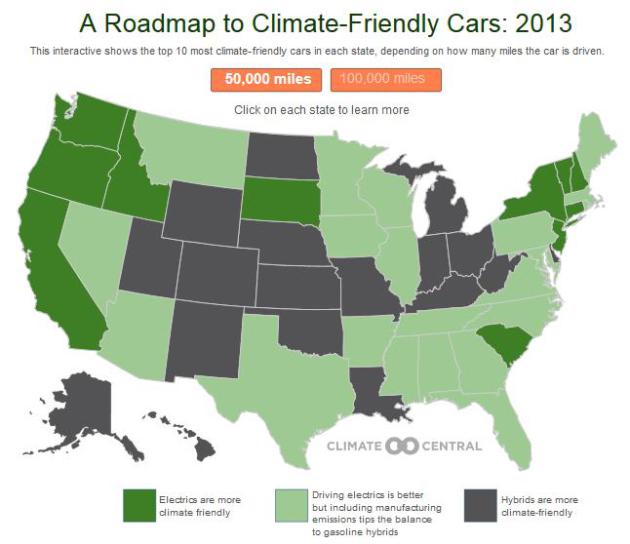
Hybrids Better For Climate Than Leaf, Tesla In Most States. I was surprised to see these results, courtesy of
Climate Central - here's the introduction: "
An
electric car is only as good for the climate as the electricity used
to power it. And in states that rely heavily on fossil fuels like coal
and natural gas for their electricity there are many conventional and
plug-in hybrid electric vehicles that are better for the climate than
all-electric cars. But that is just part of the story. Another critical
factor is the carbon emissions generated when a car is manufactured.
Emissions from producing the battery and other electrical components
create a 10,000 to 40,000-pound carbon debt for electric cars that can
only be overcome after tens, or even hundreds of thousands of miles of
driving and recharging from clean energy sources..."
Graphic credit above: "
Electric cars are not always the
best cars for the climate. In most states, the emissions from charging
electric car batteries and the emissions generated while manufacturing
those batteries are large enough that some high-mileage,
gasoline-powered hybrid cars are more climate-friendly options thhan the
most efficient electric car."
A Growing Sense Of Urgency. Here's a clip of a
Huffington Post Op-Ed from Bill Richardson, former U.S. Energy Secretary, Governor of New Mexico and UN Ambassador: "
As I prepare to take part in an event
on hurricanes and extreme weather in Miami, Florida later today, it's
clear just how much climate change threatens the state's local
communities. Florida is the most vulnerable U.S. state to sea-level
rise, with seas projected to rise
along the state's coast by as much as 2 feet by 2060 -- threatening
valuable infrastructure, homes, and communities. Even Superstorm Sandy -
which had the greatest impacts in New York and New Jersey -- caused
significant damages along Florida's east coast while centered miles
offshore. Rising seas contributed to Sandy's storm surge and tidal
surges, causing flooding throughout Miami-Dade County and sweeping away
portions of State Road A1A in Fort Lauderdale. But as overly concerned
as I am of the climate change impacts Florida faces, I'm also
encouraged. Florida has something that few other states have: A
bipartisan collaboration to address global warming's disastrous impacts..."
Rebranding Climate Change As A Public Health Issue. I
think there is some obvious logic to this approach. Nobody wants
consistent bad news (without solutions to rectify the situation). And
I've noticed that my audiences tend to sit up a little straighter when I
pivot from statistics and science to health/safety/security impacts on
their kids and future grandkids. Here's a clip from
Time Magazine: "...
The
politicization of climate change — the never-ending debate over
whether it exists, for example, and the ensuing back-and-forth over its
causes, its implications and potential solutions — further discourages
the public from action. But what if climate change were instead about
an increase in childhood asthma, or a surge in infectious diseases, or
even an influx of heat-induced heart attacks? Would that hold more
resonance for the average citizen of the world? That’s what some
climate change experts are hoping, as they steer the conversation about
global warming toward the public health issues it raises. Last week, the journal Science featured a special issue on climate change and included a study on the complex yet growing connection between global warming and infectious diseases..."
When Global Warming Finally Gets Going It Could Last For 200,000 Years.
Not sure I accept the premise on this headline; the planet has been
warming for at least 30-40 years, probably longer, but the rate of
warming has increased since 2000, in spite of what you may be hearing
from publications and web sites talking about a "pause" in warming. 90%
or more of all warming is going into the world's oceans, and there has
been no pause in warming, especially of the deep seas, worldwide. Here's
a clip of an uplifting story at
Quartz: "
New
evidence shows that, while we may not see severe climate change in our
lifetimes, global warming could snowball into catastrophe in the
distant future—and once the climate has shifted, it might not go back
to normal for a very, very long time. This
is from two new studies on climate change this week. The first,
published by researchers at the Scripps Institution of Oceanography in
California, paints a disturbing picture of what our oceans will look
like if we don’t ease up on the emission of greenhouse gases like carbon
dioxide (CO2). Scientists looked at fossils from the so-called
“greenhouse world” that existed about 50 million years ago (where the
CO2 concentration in the atmosphere was more than double what it is now)
and found that the conditions essentially killed ocean reefs It’s
not hard to see why. At those levels of CO2, the new study shows,
ocean temperatures in the tropics reached 95 °F (35 °C), with polar
oceans hitting 50 °F, about the temperature of the waters around San
Francisco today...."
Image credit above: "Now's the time to buy up that Arctic waterfront property you've been dreaming of." Reuters/Francois Lenoir.
 "...Since 2011, the United States has experienced 25 extreme weather events that each caused
more than $1 billion in damages. These events contributed to the loss
of more than 1,000 lives and each American family paying $400 more per
year..." - from a Huffington Post Op-Ed from former governor, ambassador and U.S. Energy Secretary Bill Richardson; details below.
"...Since 2011, the United States has experienced 25 extreme weather events that each caused
more than $1 billion in damages. These events contributed to the loss
of more than 1,000 lives and each American family paying $400 more per
year..." - from a Huffington Post Op-Ed from former governor, ambassador and U.S. Energy Secretary Bill Richardson; details below.


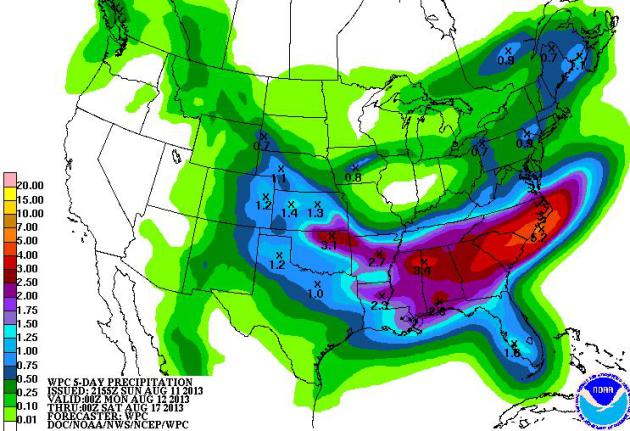





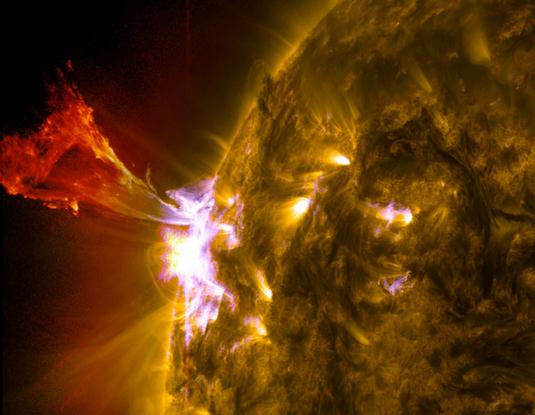
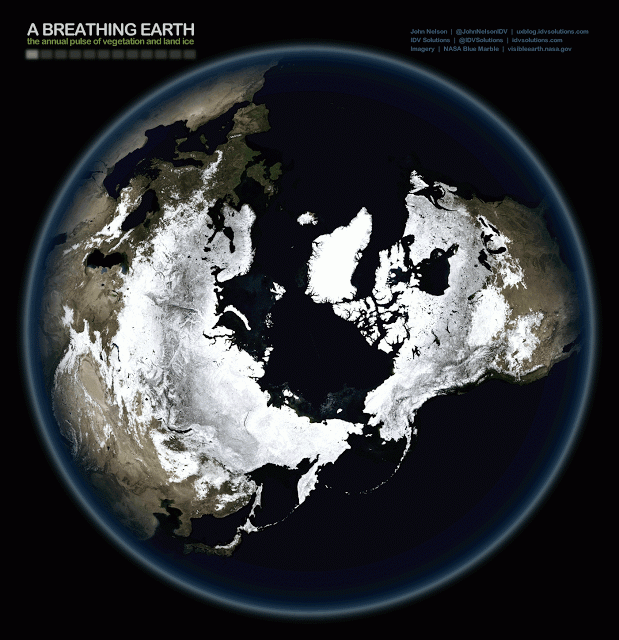
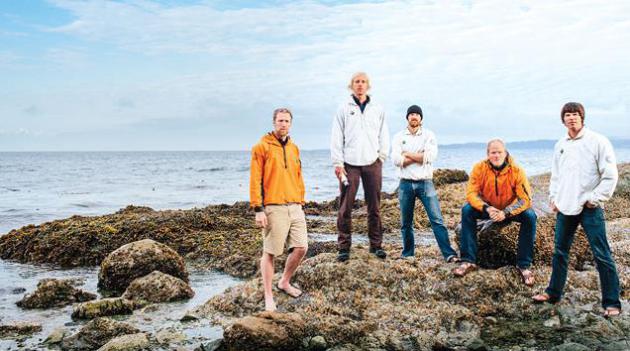
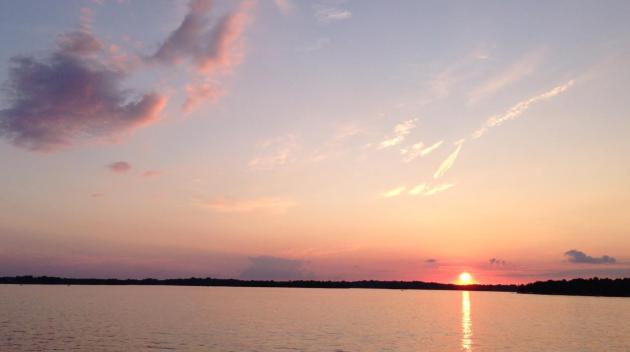

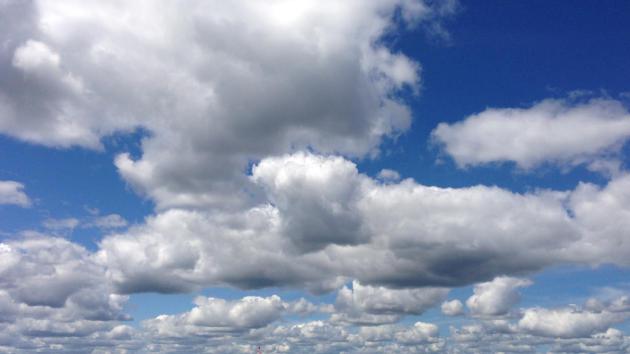

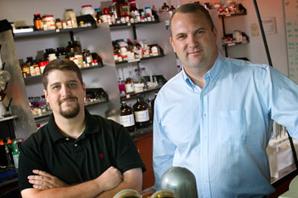

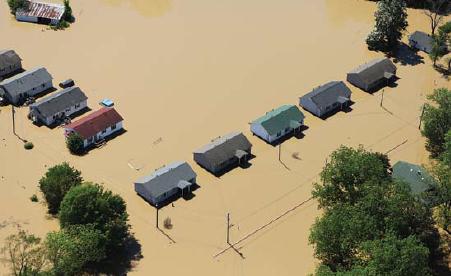


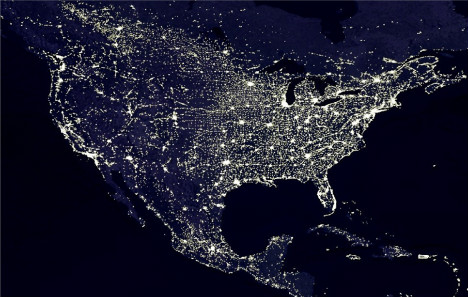
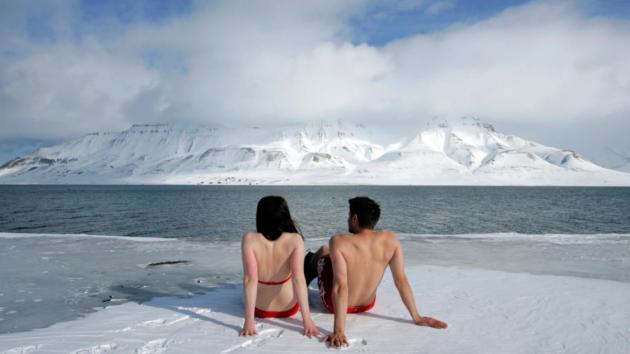
I wonderment why other professionals don't respond your website overmuch m happy I plant this. wordpress themes
ReplyDelete